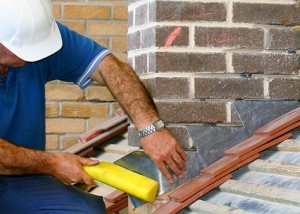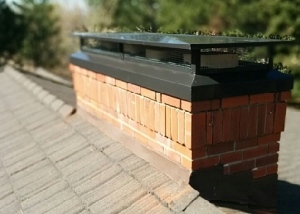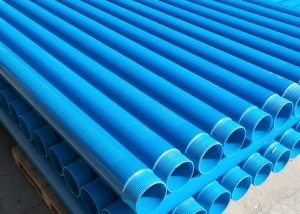The chimney is an integral part of a single system, including a heat-generating installation, ducts and flues. A chimney provides dispersion in the atmosphere of harmful emissions contained in flue gases. The aerodynamic calculation of the parameters of the chimney of the boiler room must be carried out in order for the system to effectively perform its functions and not pose a threat to human health.

The choice of a pipe for a boiler room and its installation are carried out only in accordance with the results of preliminary calculations, for which special formulas or computer programs are used
Content
- 1 How is the calculation of the parameters of the chimney of the boiler room using computer programs
- 2 Indicators for practical aerodynamic calculation of the chimney
- 3 Chimney for a boiler room: design and types (types)
- 4 How to calculate the height of the chimney
- 5 How is the diameter of the chimney calculated
How is the calculation of the parameters of the chimney of the boiler room using computer programs
The aerodynamic calculation of the chimney for an industrial boiler room is a very complex and troublesome process. Currently, such calculations are performed using different computer programs that take into account many operating conditions of the equipment. The calculations are aimed at ensuring that, at the maximum load of the boiler house, the emission of the combustion residues of the processed fuel freely goes through the pipe for subsequent disposal in the atmospheric space. Using computer calculation, it is possible to reliably determine the minimum throughput of chimneys. Errors in carrying out such calculations are extremely undesirable, as they can result in a dangerous accumulation of gases.
The calculation of the chimney by means of a computer program involves the introduction into the system of the declared indicators related to:
- to boiler power;
- outlet gas temperature indicated in the passport. If these data are not available, it is customary to use a value of 200º C;
- temperature outside. To turn on the heating, it can reach + 8º С, hot water supply - + 20º С;
- Efficiency of boilers of this type. In the absence of these data contained in the equipment passport, the calculation is carried out with a value equal to 0.92;
- excess air mass ratio for the wick. If data are not provided, then they use the indicator 1.4;
- type of fuel;
- the length of the chimneys coming from the boiler equipment;
- the material used to make the chimney;
- room temperature;
- the shape of the chimney;
- the size of the chimney, etc.
After entering all the data, the computer program performs the calculation of natural traction (traction). If it turns out that large losses occur, it is necessary to make changes to the design related to its shape, diameter, height.
Indicators for practical aerodynamic calculation of the chimney
Chimneys of boiler houses and private houses with a solid fuel boiler (fireplaces) require careful calculation taking into account a number of indicators:
- climatic features of the area;
- the terrain and the type of soil on which the building is being built;
- regional seismic activity;
- wind speeds and precipitation rates, as well as critical values;
- type of masonry furnace;
- dynamic vibrations of equipment;
- the material from which the chimney will be built, and its thermal expansion;
- type of fuel, its heat transfer;
- technical characteristics inherent to the boiler;
- outlet gas temperatures.
Using such data, you can calculate:
- height of the structure;
- optimal diameter;
- the permissible mass that the constructed chimney can have and, therefore, choose a material suitable for the arrangement of the structure.
Properly calculated height and passability, the selection of shapes and materials will contribute to natural traction, providing good heat transfer. The correct calculation is facilitated by the involvement of professional specialists. The manifestation of negligence will result in structural errors, due to which:
- internal surfaces will be exposed to excessive sedimentation of soot and ash;
- the internal cross section will gradually decrease, which will lead to weakening traction and the penetration of carbon monoxide gas formations into the interior;
- the possibility of ignition of accumulating resins and pipe deformation caused by temperature differences will increase;
- fire hazard will increase.
Chimney for a boiler room: design and types (types)
Calculation of the height of the chimney of the boiler room and its other parameters is impossible without taking into account the features of its design, composed:
- foundation and support;
- gas outlet;
- thermal insulation;
- anticorrosive protection;
- the device introducing the flues.
Flue gas, cooled in a cleaning device - scrubber, up to 60º C, is cleaned in absorbers and emitted into the atmosphere.
For the construction of chimneys can be used:
- brick. The brick structure installed by a professional stove-maker practically does not accumulate soot. It is inherent in sufficient fire safety, mechanical strength and heat capacity. Due to the destruction of the brick by the reactions that occur when the sulfur oxides deposited on the walls come in contact with water, the use of brick structures has sharply decreased;
- steel. Allows you to simulate the configuration of the pipe. It will last about ten years, provided that fuel with a low sulfur content is used;
- ceramics. It is steady against influence of condensate, differs in fire resistance. But the construction, weighed by metal rods, is characterized by excessive massiveness, which makes installation difficult;
- polymers. Are used for installation on geysers and in a boiler room with a temperature no more than 250º C.
Depending on the features of the supporting structure, chimneys can be:
- self-supporting, made of sandwich pipes. They are easily mounted on roofs with fastening inside the building and, if necessary, are transported, but have significant limitations in use - in terms of temperature (350º C), snow and wind load, level of chemical aggressiveness of combustion products;
- columned. It is possible to install a multi-barrel steel structure with a diameter up to three meters when connected to several boilers;
- (about) front. The design is considered the most economical, since it does not require a strong foundation and the use of load-bearing elements, and the use of modules provides ease of replacement;
- farm. They are used, as a rule, in areas with increased seismic activity;
- masted. The use of steel braces gives additional stability to the support tower of three to four masts with attached chimneys.
How to calculate the height of the chimney
The correctness of the calculation of the height of the chimney affects the efficiency of the heating unit, expressed in the achievement of the required amount of natural draft. According to the standards set by SNiP, the height can not be less than five meters. Neglect of this indication leads to a drop in the level of natural traction and inefficient operation of the heating system. By setting the pipe too high, we will also reduce natural draft, because smoke passing through an overly elongated channel will cool and move at a falling speed. Incorrect calculations lead to air turbulence and problems associated with the area of wind backwater. Strong gusts of winds can even extinguish the fire in the furnace.
The calculations made during the construction of industrial construction are very complex and involve the introduction of a large number of different indicators. Determining the height of the chimney for an object of private construction, it is advisable to observe the following recommendations:
- the length should be at least five meters on the segment connecting the base and the highest point. With this length, sufficient fire safety is ensured;
- a chimney mounted on a flat roof should rise above its surface by at least half a meter;
- when erecting a chimney on a sloping roof, a pipe located at a distance of less than one and a half meters from the ridge is installed half a meter above it. Mandatory in this case is the additional strengthening of the structure by stretch marks to increase stability, otherwise it may be damaged by strong gusts of wind. At a distance of up to three meters from the ridge, the pipe is installed at the same height with it. If the distance exceeds three meters, then the angle between the horizontal line of the roof ridge and the virtual line drawn between the ridge and the upper cut of the chimney should be 10º;
- the distance between the chimney and tall trees and buildings should be more than two meters;
- if the roofing material is combustible, then the height of the chimney should be further increased by half a meter;
- on a multi-level roof with elevation differences when calculating, rely on the height of the ridge;
- when the boiler room is located in the extension, the pipe head should rise above the area of wind support located in the space defined by the line drawn at an angle of 45 ° from the top of the house to the ground.

If the roof material does not have refractory properties, the length of the outer part of the chimney must be increased
The documentation supplied with the heating equipment contains the values of the parameters that affect the selection of the height of the chimney.
Carrying out the calculations is associated with the use of the formula:
Hmin = √A * Mi * F / (Spdk * Sfi * √V * T)
This formula provides for the use of the following parameters: A - coefficient characterizing the regional meteorological situation; Mi - masses of gas formations passing through the chimney per unit time; F - sedimentation rate of particles formed during combustion; Spdki and Sfi - indicators that reflect the level of concentration of substances that contain flue gas; V is the volume of gas; T is the difference in air temperature when it enters the pipe and when exiting it.
How is the diameter of the chimney calculated
The determination of the required diameter of the chimney is carried out in order to calculate the draft. With the known power of the heating unit, you can rely on the recommendations according to which:
- if the power is below 3.5 kW, then a chimney with a cross section of 0.14x0.14 m will be enough;
- at a power of four to five kW, a cross-section of 0.14 x 0.2 m will be optimal;
- with a power of five to seven kW - 0.14x0.27 m.
The calculation of the cross section of the chimney requires the following data:
- the amount of fuel consumed in one hour (information is contained in the equipment passport). This parameter is considered as the main;
- temperature indicators of the gas entering the pipe (also passport data, about 150-200º C);
- chimney heights;
- the gas velocity in the pipe, usually taken as 2 m / s;
- natural draft, taken, as a general rule, for 4Pa.
It is not difficult to calculate it by multiplying the height of the chimney by the difference in the densities of atmospheric air and flue gas.
You can use this formula:
d2 = 4V / πW, in which:
d2 is the desired value of the cross-sectional area; V is the volume of gas; W is the gas velocity in the pipe.
The formula for calculating the diameter:
S = m / ρw, in which:
S is the cross-sectional area; m is the amount of fuel consumed during the hour; ρ is the density of gases in the chimney. As a rule, simplifying the calculations, it is taken as equal to the density of air; w is the gas velocity in the chimney. In cases where the diameter of the chimney must be determined with high accuracy, it is better to resort to the help of specialists with the necessary qualifications. To equip a chimney for private home ownership, it will be quite enough to adhere to recommendations of the most general nature.
The aerodynamic calculation of the chimney, carried out quite skillfully, allows counting on the long-term successful functioning of the heating system. Having achieved good natural traction and high throughput, you can not worry that the chimney will be clogged with soot and require repair. Properly performed calculations will determine the operation of boiler equipment in full compliance with environmental standards. A combination of two factors will be achieved, ensuring an existence that meets the standards of modern civilization - a comfortable temperature in heated rooms and the absence of damage to the environment and human health.









